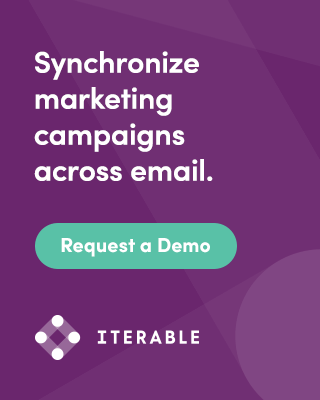Can you think of something that has been around for ages, is a rich source of information, and is meant to grab eyeballs? But, it is increasingly being met with glazed eyes. It can be extremely useful, and yet you find yourself ignoring it.
We are talking about the good old ad, of course. The world’s first advertisement was aired in the US in 1941. After the advent of the internet in the 90s, the first banner ad popped up nearly 30 years ago, a tiny little rectangle. About 44 percent of its viewers registered a click-through, and the world of advertisements was remade. It has since become more digital and diverse.
Banners: Not so Bright a Picture Today
Marketers continue to peg a huge part of their efforts and campaign goals on digital ads – both display and paid search. According to a 2018 study by Quantcast, over 75 percent of global direct brand marketers thought digital marketing was critical to their overall marketing efforts. While the worldwide digital ad spend saw a dip in growth last year, it’s expected to bounce back in 2021.
But, on the other side, the picture is not too promising. The average CTR on banners (alongside other displays) has plummeted to 0.06%. Most customers don’t remember the online ads they have seen. A significant percentage of internet users have been constantly surveyed to swear against traditional banner advertising, and a large number dodge banners and other displays with ad-blockers.
So, what can marketers do to bridge this gap between investment and fulfillment? Can one continue to hope for a (better) future for banners? Are there specific steps that can be taken to fight the tide of ‘banner blindness’?
Why the Dip in Popularity?
To begin with, here are a few factors that are possibly contributing to banner blindness – which, as you’d know, refers to the prejudice against and consequent ignoring of banner ads by the larger percentage of browsers globally. They are important to understand the phenomenon and to figure out what can be done differently.
- Ubiquitous: The phrase ‘banner blindness’ first came into the parlance of the web community from the 1998 study “Banner Blindness: Web Searchers Often Miss Obvious Links,” done by Jan Panero Benway and David M Lane. Since then, the populace browsing the web at any given minute has expanded exponentially. The number of Google searches and the quantum of banners has grown by leaps and bounds. Every day, every month, the average user is served thousands of banners along with the content they are viewing. Banners are thus everywhere, and browsers have learned to ignore them for the most part.
- The fight for attention: Along with banners, a number of other things too have grown in their presence on the web. With every minute spent on the internet, looking up information, shopping, or just browsing, there is a deluge of content and stimuli for browsers in the form of images, sounds, and videos. As a result, browsers in recent years have shown the learned behavior of ‘selective attention’ – focusing only on things that they perceive as useful for their goals. To complete their searches efficiently, people have conditioned themselves to focus on web elements that are actually helpful, such as navigation bars, content headlines and other leads, and search tools. Ads and banners in specific, which often don’t provide direction information, get ignored as a consequence.
- Changing search patterns: The way in which internet users search has also registered a sea change. There is an increasing tilt towards the use of longtail keywords leading browsers to more specific results. Gone are the days when users always relied on the internet to navigate and direct them. With the growing preference for certain platforms and more conscious shopping behaviors, there is also the preference to key-in the site address and cut through the sea of page results and noise. So, banners too will have to evolve in line with these changes and target niche pages.
- Evolved browsing patterns: The ways in which users browse have evolved in recent years, in terms of time spent, the various use patterns, devices, etc. One of the standout changes is the heavy preference for mobile browsing. It has consistently accounted for about half of the global web traffic since 2017. Worldwide, users look to their mobile for a range of internet activities, some of the more popular including watching movies or videos, accessing and sending emails, and browsing and engaging with social media. Though mobile advertising has grown in the US in the past couple of years, it has still not scaled the necessary heights. Add to that, the challenges in optimizing ads for mobile.
4 Things that Can Boost The Future of Banners
To fight the tide of banner blindness, there are a few fundamental things that marketers can continue to do or initiate.
1.Target sites and audiences
Banners should always be targeted at the right site and the proper audience. A good amount of research, to begin with, is the first step towards this goal. The design, content, and individual elements of a banner have to be tailored in line with the purpose and content of the site. They should also appeal to the demographics of the average browser of that site. Additionally, it would also serve to incentivize the ad for a higher CTR. Remarketing has proven to be an effective path to raise CTRs and direct users to a specific landing page. From the user perspective, it’s easier and more beneficial to click on a banner ad when it is promoting just the product they were searching for.
2. Make your banner stand out
The banner these days (no pun intended) has to pop. When these ads have become a dime a dozen, it stands to reason it needs to grab attention from the get-go. Design and size your banner such that it stands out from the surrounding content. The dimensions and the colors have to set it apart for the viewer. But, bear in mind, research shows a banner with integrated content (a form of content marketing, if you will) has a higher potential for clicks. So, a good banner ad has to still ‘merge’ with the site content. Additionally, the content of your banner has to be extremely well-crafted and targeted. The CTA has to be loud and clear and should address the UX factor of ‘what’s in it for me’ unfailingly.
3. Get your ad placement right
The positioning of your banner is equally important. It’s important to track the browsing pattern on a specific page before positioning high-potential ads. Front and center is generally prime ad estate for visibility, but there might be other sections receiving a good amount of engagement. Studies also show that genuine content elements that have some ad-like traits tend to be ignored, too. So, if your banner is a legitimate piece of content marketing, make sure it’s in a spot that will catch the browser’s eye. You can go by the dictum of ‘F’ patterns of browsing, as shown by eye-tracking, and have your ad as a leaderboard banner at the page top.
4. Experiment with formats
Today, there are a number of unique ad formats that marketers can choose from. These will definitely help you stand out, along with great placement of your ad. Users are far more likely to look at and engage with creative banners than with the traditional formats. Video ads, for example, see an average CTR of 1.84%, the highest click-through rate among all digital ad formats. Then, there are 360 ° degree ads, 3D photo ads, and AR ads, which have registered quite a bit of game-changing success. Banners can be executed with ease as HTML5, (software-agnostic and customized with logic to target user preferences), GIF (engaging and inexpensive), or static (clear CTA and unobtrusive) banners. They are easy to implement with the newer technologies and boost customer buy-in and sales at the end of the day.
Check out this subtle yet impressive GIF banner created by Iterable:

Wrapping Up
So, our message: the good old banner ad is here to stay. Remember, digital content consumption and online shopping are two trends that are only set to grow and evolve in the coming decades. So, rest assured, your digital ad spending is always going to convert. Only, the design, logistics, and content of banners need to keep pace. Whether it’s mobile ads, new-gen banners with interactive content, or revolutionary designs – the way forward is constantly experimenting, ditching the tried-and-tested. But, also, don’t shy away from trying and testing! Adapt the A/B method at every turn, tweak and make your banners pop out and clicked through.
Need expert guidance on restyling your banner-ad approach? Our professional and creative designers can help you customize.



Kevin George
Latest posts by Kevin George (see all)
A Deep Dive into ‘SFMC Automation Studio’ - Part 3
7 Ways to Slice Your CRM Database for Better Email List Segmentation